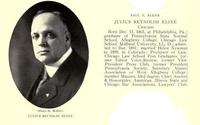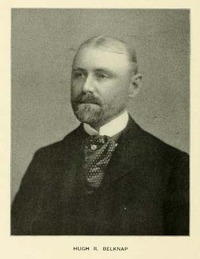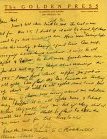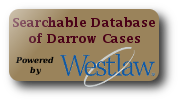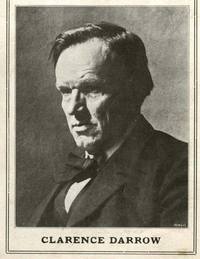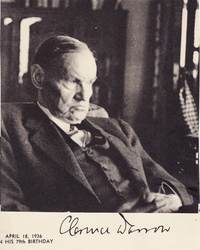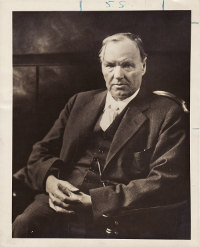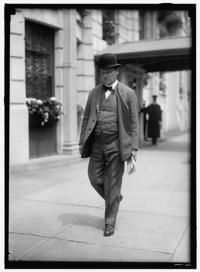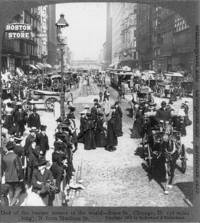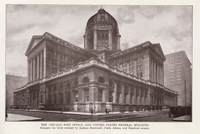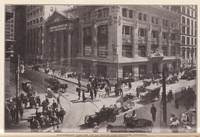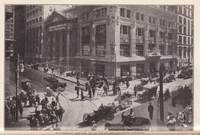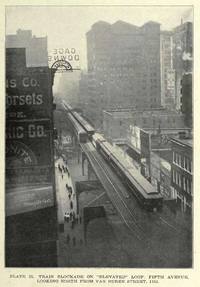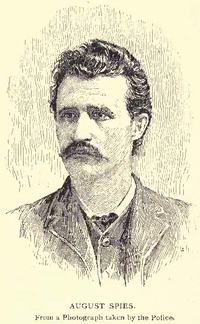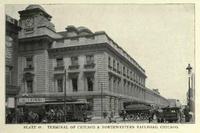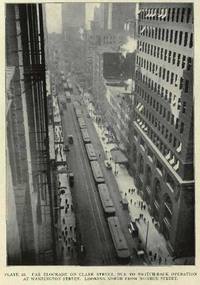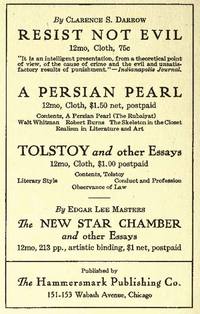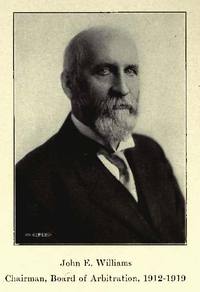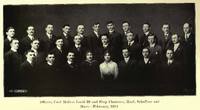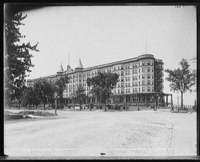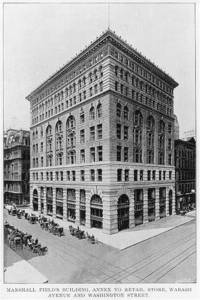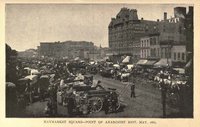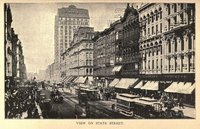Illinois Cases
Clarence Darrow practiced law in Chicago for nearly fifty years. Besides his many famous cases he also participated in many less well-known but interesting cases in Illinois, with the majority of these being in Chicago. This section provides information, documents and photos about some of these less well-known cases from Illinois. Darrow was also influenced by the 1886 Haymarket case and information and material is provided about that case.
|
Brief for the State of Illinois.
August Spies et al. vs. The People of the State of Illinois (Abstract of Record) Volume 1 (1887).
Appeal of the Haymarket defendants.
August Spies et al. vs. The People of the State of Illinois (Abstract of Record) Volume 2 (1887).
People v. Unger (1900).
Various documents related to the case of August M. Unger, a medical doctor, who concocted a plan with one of his patients, Marie Defenbach, to defraud insurance companies. Unger's plan was that the girl should insure her life for large sums of money and later he would give her a drug which would make her appear desperately ill and lapse into a coma simulating death. After Defenbach was declared dead another body would be secured and quickly cremated. Unger would issue the necessary death certificate and collect the insurance money. But something went very wrong and Defenbach died on August 25, 1900 under suspicious circumstances. Unger, Francis W. Brown, and Frank H. Smiley were arrested and charged with conspiracy to defraud various insurance companies. During the investigation it was discovered that Doctor Unger's brother died in New York in September of 1899 under similar circumstances. Smiley, who was a detective, pled guilty and turned state's evidence. The trial of Unger and Brown began on May 21, 1901. Clarence Darrow defended Brown. The defendants were convicted on June 10, 1901 and given indeterminate sentences. Unger's appeal was denied and he was sentenced to five years in prison. Darrow was able to convince the judge that Brown was less culpable than Unger and with the consent of the state's attorney, the verdict was set aside, and a judgment entered sentencing Brown to pay a fine of $2,000.
Chicago & N. W. Ry. Co. v. Eleanor B. Weeks (1902).
Darrow & Thompson represented the appellee, a woman who was injured by a train. A jury verdict in favor of the appellee was overturned in this appellate court opinion.
Hays v. St. Paul M.E. Church, 196 Ill. 633, 63 N.E. 1040 (Ill. 1902).
Injunction by Nellie King Hays against the St. Paul Methodist Episcopal Church and others over a deed conveying property to the church. Altgeld, Darrow & Thompson, for appellees.
West Chicago St. R. R. Co. v. Callow, 102 Ill.App. 323 (1902).
Callow was struck and killed by a car of the West Chicago St. Railroad company. Railroad appealed $4,000 damages award. Altgeld, Darrow & Thompson, attorneys for appellee.
The Chicago City Railway Company v. John Tuohy, 196 Ill. 410 (1902).
In this personal injury case involving a young boy who was hit and seriously injured by an electric car, Altgeld, Darrow & Thompson, and P.A. Hines argued for the appellee boy.
Burke v. Snively, 208 Ill. 328 (1904).
Darrow & Masters argued for the appellant in this suit against government officials.
Meat v. Rice (1904).
A pamphlet by Samuel Gompers on Asian workers entitled Meat vs. Rice: American Manhood Against Asiatic Coolieism, Which Shall Survive?
Brenock v. Brenock, 230 Ill. 519 (1907).
This case involved the interpretation of a will. Darrow, Masters & Wilson argued for the appellee.
VanCleef v. City of Chicago, 240 Ill. 318 (1909).
VanCleef successfully sued the city of Chicago because she was injured during a merchant's carnival and street fair. She was represented by Darrow, Masters & Wilson in this appeal and her verdict was affirmed.
Chudnovski v. Eckels, 232 Ill. 312, 83 N.E. 846 (1908).
Action of assumpsit to recover damages for personal injury. Issue on appeal was whether or not the municipal court of Chicago had jurisdiction of the subject-matter. Darrow, Masters & Wilson for appellee.
Carlin v. Peerless Gas Light Co., 283 Ill 142 (1918).
Darrow, Masters & Wilson, and Jacob L. Baily represented the defendant in error in this suit over damages for a wrongful death.
O'Brien v. Int. Ladies' Garment Workers' Union, 214 Ill. App. 57 (1919).
Two cases involving criminal contempt for violating a labor injunction during a strike. Darrow & Sissman and Yarros of counsel. The second case is O'Brien v. Int. Ladies' Garment Workers' Union, 214 Ill. App. 61 (1919).
Address of Clarence Darrow in the Trial of Arthur Person (1920).
Clarence Darrow's closing argument to the jury in the trial of Arthur Person. Person was charged with joining an organization that called for the violent overthrow of the government, and was acquitted of this charge. Darrow's argument is followed by the jury instructions.
Argument in Defense of the Communists (1920).
Clarence Darrow and co-counsel defended twenty members of the Communist Labor party who were charged with violating a recently passed Illinois statute which made it unlawful to advocate the reformation or overthrow by violence or other unlawful means of the representative form of government secured to citizens of the United States and the states. They appealed, and Darrow participated in the appeal before the Supreme Court of Illinois. Their convictions were upheld in People v. Lloyd, 304 Ill. 23, 136 N.E. 505 (1922).
Clarence Darrow, W. C. Goudy, and A. W. Pulver argued for the appellant Railway Company in this personal injury case. On appeal, a verdict for the appellee was reversed because of erroneous jury instructions, improper admission of a dissenting opinion, and improper exclusion of a different decision.
Crosby v. People, 189 Ill. 298, 59 N.E. 546 (1901).
Marjorie Crosby was a widow facing eviction. When deputies came to serve a writ of assistance to evict her, Crosby's 13-year-old adopted son shot and killed a deputy sheriff with a revolver. The trial, which began in April of 1899, was big news in Chicago. Clarence Darrow and William Prentiss, a former judge, defended the Crosbys. Even though she did not shoot the victim, Marjorie Crosby was convicted of manslaughter. The Supreme Court of Illinois held that there was insufficient evidence to sustain a conviction of manslaughter for having aided, abetted, or assisted in the killing. Clarence S. Darrow and William Prentiss, for plaintiff in error.
People v. Belinski, 205 Ill. 564, 69 N.E. 5 (1903).
Clarence Darrow and Edgar Lee Masters defended Belinski, a lawyer who was disbarred for falsely representing to his client that he had obtained a divorce for the client by showing him a fictitious divorce decree. The disbarment was upheld in this appeal.
Carlin v. City of Chicago, 177 Ill. App. 89 (1913).
Clarence Darrow and Francis S. Wilson represented the plaintiff in error in this suit over the wrongful death of six-year-old child.
People v. Bond, 281 Ill. 490 (1917).
Isaac Bond was a black man convicted for murdering a white woman and sentenced to life in prison. Clarence Darrow and two other lawyers unsuccessfully appealed his conviction.
People v. Rappaport 364 Ill. 238, 4 N.E.2d 106 Ill. (1936).
Appeal of 30 year old Joseph Rappaport, the son of a rabbi, who was convicted of murder and sentenced to death for killing a government informant in a narcotics case. Rappaport was represented by Clarence Darrow, William W. Smith, William L. Carlin, and Edward M. Keating in this appeal. The Supreme Court of Illinois affirmed the conviction and sentence. His execution was delayed numerous times by Governor Horner. The day before the latest execution date, Governor Horner announced that he would consider a further reprieve if Rappaport submitted to a polygraph test which Horner placed great faith in. On March 2, 1937, just hours before Rappaport was to be executed, a polygraph machine was taken to his death cell. It was administered by Leonarde Keeler, co-inventor of the polygraph and the first full-time professional polygraph examiner. Keeler was also a friend of Governor Horner. Keeler announced that Rappaport had failed the test and he was executed in the electric chair two hours later.
Statement by Illinois Governor Dunne about a pardon for a client of Clarence Darrow.
The Hart Schaffner & Marx Labor Agreement: Being a Compilation and Codification of the Agreements of 1911, 1913 and 1916 and Decisions Rendered by the Board of Arbitration (1916).
In 1910, about 40,000 clothing workers who toiled in Chicago's men's clothing industry went on strike for nineteen weeks. The focus of the strike was Hart, Schaffner and Marx, the largest company that refused to join the Chicago Wholesale Clothiers Association (an organization of large firms). The strike began when several women workers refused to take a cut in pay and walked out. This quickly ignited a large strike. Eventually an agreement was reached by representatives of the workers and Hart, Schaffner and Marx on March 13, 1911. The agreement was a compromise between the United Garment Worker's (UGW) demand for a closed shop and management's demand for an open shop.
The agreement setup an arbitration board to rule on shop grievances. Clarence Darrow represented the workers and Carl Meyer represented the company. Dean John Wigmore of Northwestern Law School was chosen as an impartial chairman but he was unable to serve, leaving Darrow and Meyer to work out the issues between them. Darrow's law partner, William O. Thompson, took his place when Darrow went to Los Angeles to defend the McNamara brothers who were arrested after the bombing of the Los Angeles Times building in October 1910. The clothing workers strike led to the formation in 1914 of the Amalgamated Clothing Workers of America which was led by Sidney Hillman.
Article critical of Governor Altgeld's pardon of the Haymarket anarchist. Published in volume 5 of The Green Bag.
Current Topics - The Albany Law Journal (1896).
Article responding to Governor Altgeld's criticism of some courts and judges.
The Iroquois Theater Cases (1907).
Two articles from the Illinois Law Review about the Iroquois Theater litigation. One article is very critical about the length of the litigation--"A Flagrant Instance of the Law's Delays"--while the other tries to explain why it has taken this much time--"Another View."
This pamphlet includes a preface by Lucy E. Parsons, whose husband Albert Parsons was executed for the Haymarket bombing.
This article describes the political success and campaign techniques of Chicago's First Ward Alderman John Coughlin, along with the unsuccessful attempt of David L. Frank to oust Coughlin from office. Coughlin went to great lengths to garner votes and care for his supporters, even providing lodging and food before the election.
Clarence Darrow and Other Attorneys Defend Lewis Thombs (1902).
Published in The Public.
Movement to Make Clarence Darrow a Candidate for Mayor (1902).
Discussion of Clarence Darrow's decision not to run for Mayor of Chicago as an independent candidate. Published in The Public.
Public Ownership Party Nominates Clarence Darrow (1902).
Brief announcement that Clarence Darrow had been nominated as a candidate for the Illinois legislature. Published in The Public.
How Chicago is Finding Herself by Ida M. Tarbell (1908).
This article is about Chicago under Mayor Edward F. Dunne's leadership. It includes references to Clarence Darrow, who quarreled with the mayor and resigned as special traction counsel.
Chicago Husband-Killing and the "New Unwritten Law" by Marianne Constable (2006).
Discusses why so few women who killed their husbands in Chicago between 1870 and 1930 were convicted of murder. It appears that a "new unwritten law" protected many women from being convicted. Also discusses the murder case of Emma Simpson who shot and killed her husband in April 1919 in a crowded Chicago courtroom during alimony proceedings. The couple was separated at the time but Emma Simpson refused to divorce him. She declared that she would be acquitted and stated "the new unwritten law, which does not permit a married man to love another woman, will be my defense." Clarence Darrow defended her and said to the all-male jury: "You've been asked to treat a man and a woman the same - but you can't. No manly man can." The jury found Emma Simpson to be insane and guilty. Published in TriQuarterly no. 124 (2006), 85-96.
News account in the San Francisco Call about a 1903 railway strike in Chicago in which Clarence Darrow represented the strikers. Includes a small picture of Darrow.
This 1883 publication describes Chicago's founding and many aspects of the city, including early modes of transportation, commerce, and theater.
Anarchy and Anarchists (1889).
"A History Of The Red Terror And The Social Revolution In America And Europe. Communism, Socialism, And Nihilism In Doctrine And In Deed. The Chicago Haymarket Conspiracy, And The Detection and Trial of the Conspirators." Written by Chicago Police Captain Michael Schaack, who played a prominent role into the investigation of the Haymarket bombing.
Reasons for Pardoning Fielden, Neebe, and Schwab, the So-Called Anarchists, June 26, 1893.
This excerpt from Governor Altgeld's book, Live Questions, explains his justification for pardoning the remaining Haymarket Anarchists.
The Chicago Martyrs by John P. Altgeld (1899).
This book contains speeches, given by the Haymarket Anarchists in Judge Gary's courtroom, requesting a new trial. It also contains Governor Altgeld's reasons for pardoning the three who were not executed.
Live Questions, by John Peter Altgeld (1899).
John Peter Altgeld became Clarence Darrow's friend and mentor soon after Darrow moved to Chicago. This book contains Altgeld's views on numerous social issues and his reasons for actions he took as governor of Illinois.
"Lest We Forget" Chicago's Awful Theater Horror, By the Survivors and Rescuers (1904).
Account of the Iroquois Theater fire on December 30, 1903 which killed 602 people. Most the victims were women and children. Numerous safety violations were uncovered after the tragedy. Clarence Darrow worked behind the scenes for several of the defendants who faced criminal charges. No one was ever convicted and because the company was insolvent the victims' families were not compensated.
Chicago Traction: A History Legislative and Political by Samuel Wilbur Norton (1907).
Norton discusses a political and legal battle over municipal ownership of the Chicago street car (traction) system. Several references are made to Clarence Darrow. At one point, Darrow and another attorney were appointed special counsel on traction for the city of Chicago.
People vs. Spies et al.: The Chicago Anarchist Case (1907).
Chapter from Decisive Battles of the Law covering the Haymarket case from a book about eight important cases. Clarence Darrow closely followed the Haymarket case.
Decision on the Freedom of the Press (1916).
Chapter from the book Dunne: Judge, Mayor, Governor which discusses a case in which Clarence Darrow and others defended two editors from the Chicago American newspaper facing a contempt of court order by Judge Hanecy.
50 - 50 Fighting Chicago's Crime Trusts by Henry B. Chamberlin (1916).
The first chapter of this book called "Arson Trust" describes a major arson investigation in Chicago. Clarence Darrow defended at least one of the defendants arrested for arson after this investigation. In 1912 Paul and Edward Covitz, two brothers who were also woolen merchants, approached Joseph Clarke, a public insurance adjuster, who was also part of a nationwide arson ring to torch their business. Clarke arranged this but the fire that was set on the night of November 5, 1912 was obviously arson and the three were arrested and indicted by a Cook County grand jury in April 1913 for arson and burning to defraud. The arsonist was also arrested. Just three days after he was arrested, Clarke tried to bribe one of the assistant state's attorneys to quash the proceedings before the grand jury. Clarke was arrested for this bribery attempt. Darrow most likely defended Clarke because Darrow is named as counsel for Clarke on his appeal. During the trial, evidence of Clarke's bribery attempt was ruled admissible to show that Clarke was in the conspiracy with the Covitz brothers and equally guilty with them of causing the fire. The defendants were convicted by a jury in August and sentenced to the Joliet penitentiary. Their convictions were upheld by the Supreme Court of Illinois in People v. Covitz, 262 Ill. 514, 104 N.E. 887 (Ill. 1914).
The Clothing Workers of Chicago: 1910-1922.
Published by the Chicago Joint Board, Amalgamated Clothing Workers of America, the book makes several references to Clarence Darrow's work on the Hart, Schaffner and Marx labor agreement.
The Negro in Chicago: A Study of Race Relations and a Race Riot (1922).
Report on the Chicago Race Riot of 1919 in which fifteen whites and twenty-three blacks were killed in July and August 1919. Written by the Chicago Commission on Race Relations. A reference is made to Clarence Darrow being an honorary member of the Chicago Free Thought Educational Society on p. 541.
Tennes As A Vice Chief (1929).
Chapter from the Illinois Crime Survey, a massive report of over 1100 pages, published in 1929. This chapter titled "Tennes As A Vice Chief" is about a violent Chicago gangster named Jacob "Mont" Tennes. In 1907 Tennes had acquired a very lucrative business when he took over a wire service that transmitted the results of horse races that bookies needed. Tennes demanded Illinois bookies to pay him half of their daily take and there were more than 700 bookies in just Chicago. But other gangsters wanted in on such a profitable enterprise and Tennes' home was bombed 6 times from July to September 1907. Mont Tennes was so successful that his activities prompted Judge Kenesaw Mountain Landis of the United States District Court, Northern District of Illinois, to launch an investigation. Judge Landis issued subpoenas and also requested the cooperation of Illinois Bell Telephone in the investigation. On October 2, 1916, Tennes, without a subpoena, was surrendered by his special counsel, Clarence Darrow. Tennes took Darrow's advice and refused to answer incriminating questions. But others who knew of Tennes operations reluctantly testified that the General News Bureau, with Tennes owning 65%, made $20,000 to $25,000 per month profit but kept absolutely no paperwork of its business. But Judge Landis ended the investigation when he concluded local gambling was not within the jurisdiction of the federal courts and the interstate transmission of sporting news was not a crime. In 1921, Judge Landis was appointed to be the first commissioner of Major League Baseball and he served as commissioner until 1944.
1899 bio of Edgar Lee Masters who would become Clarence Darrow's law partner in 1903. Published in The Bench and Bar of Illinois.
The Chicago Traction Question by Clarence S. Darrow.
Darrow advocates municipal control of the street railways in Chicago in this article. Vol. XII, The International Quarterly (1905-1906).
Proceedings of the Illinois State Bar Association.
Thirtieth Annual Meeting, Chicago, July 12 and 13, 1906. Several references are made to Clarence Darrow. In particular, Darrow discussed his views in support of Public Ownership.
Elbridge Hanecy (1908).
Short bio of Elbridge Hanecy. In 1901, Clarence Darrow, John P. Altgeld and co-counsel represented several editors of the Chicago American newspaper after they were jailed for contempt of court by Judge Hanecy who was angry because the paper criticized a court decision he made.
Edgar Lee Masters (1916).
Short bio of Edgar Lee Masters published in Courts and Lawyers of Illinois.
Clarence Darrow bio in Courts and Lawyers of Illinois (1916).
Short biography of Clarence Darrow.
Experience of Hart, Schaffner and Marx with Collective Bargaining by Earl Dean Howard (1917).
Howard was the Director of Labor for Hart, Schaffner and Marx and Professor of Economics at Northwestern University.
Hart Schaffner & Marx Labor Agreement: Industrial Law in the Clothing Industry (1920).
Labor agreement following a nineteen-week strike of workers in the Chicago mens' clothing industry in 1910. The agreement setup an arbitration board to rule on shop grievances. Clarence Darrow represented the workers. The agreement, signed by representatives of the workers and Hart, Schaffner and Marx was a compromise between the United Garment Workers (UGW) demand for a closed shop and management's demand for an open shop.
William L. Carlin bio in The Bench and Bar of Illinois (1920).
William Carlin practiced law with Clarence Darrow and Peter Sissman.
Edward Brundage (1920).
Short bio of Edward Brundage, Attorney General of Illinois. Clarence Darrow faced Brundage in court including during his defense of Isaac Bond, a black man convicted of murdering a white women.
Clarence Darrow bio in The Bench and Bar of Illinois.
Short bio and picture of Clarence Darrow published in 1920.
Photos - Key Figures
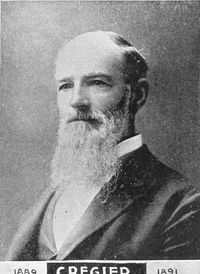
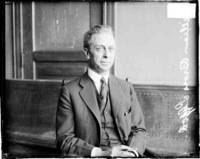
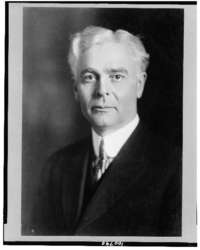

wiki/File:William_hale
_thompson.jpg

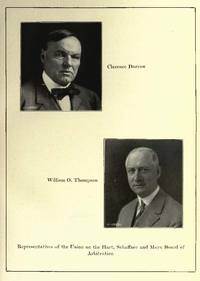
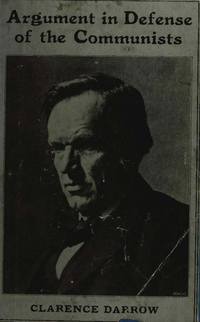
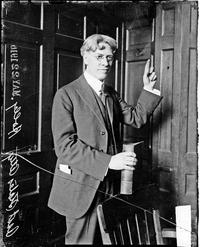

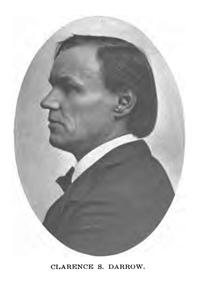
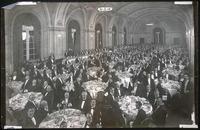
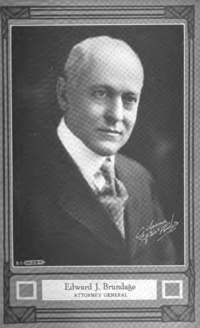

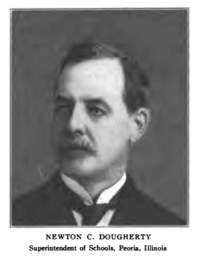
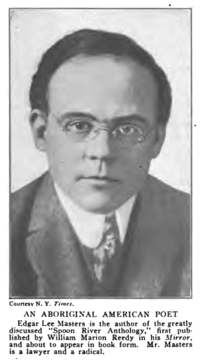
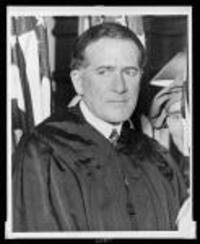
![William Hale Thompson [between 1911 and 1917]](/riesenfeld_images/darrow/thumbs/Mayor_Big_Bill_Thompson.jpg)

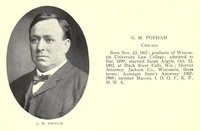
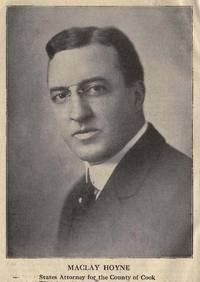
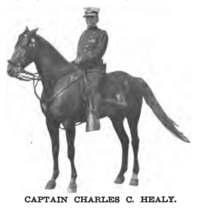

In his autobiography, Clarence Darrow recounts how while he was still living in Ohio he first became aware of Altgeld. "Judge Richards, a police judge in Ashtabula, gave me my first sane idea of crime and criminals. He gave me a little book, Our Penal Code and Its Victims, by Judge John P. Altgeld, of Chicago, which was a revelation to me. This book and the author came to have a marked influence upon me and my future." The actual title of the book is Our Penal Machinery and Its Victims and it so influenced Darrow that sometime after arriving in Chicago in 1888 he went to meet Altgeld. Darrow and Altgeld, who was at this time a judge, quickly became good friends and Darrow looked up to Altgeld perhaps more than any other person in his life. This photo is from Altgeld's book Live Questions published in 1899.

During a eulogy at Altgeld's funeral Darrow said:
"My dear, dead friend, long and well have we known you, devotedly have we followed you, implicitly have we trusted you, fondly have we loved you. Beside your bier we now must say farewell. The heartless call has come, and we must stagger on the best we can alone. In the darkest hours we will look in vain for your loved form, we will listen hopelessly for your devoted, fearless voice. But, though we lay you in the grave and hide you from the sight of man, your brave words will speak for the poor, the oppressed, the captive and the weak; and your devoted life inspire countless souls to do and dare in the holy cause for which you lived and died."

During a eulogy at Altgeld's funeral Darrow said:
"My dear, dead friend, long and well have we known you, devotedly have we followed you, implicitly have we trusted you, fondly have we loved you. Beside your bier we now must say farewell. The heartless call has come, and we must stagger on the best we can alone. In the darkest hours we will look in vain for your loved form, we will listen hopelessly for your devoted, fearless voice. But, though we lay you in the grave and hide you from the sight of man, your brave words will speak for the poor, the oppressed, the captive and the weak; and your devoted life inspire countless souls to do and dare in the holy cause for which you lived and died."
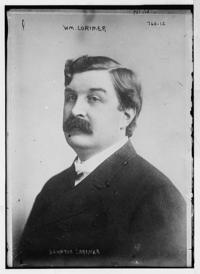
Photos
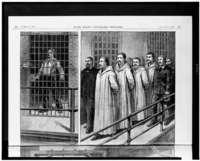
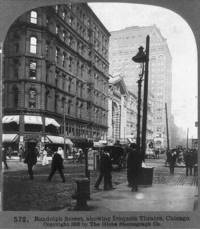
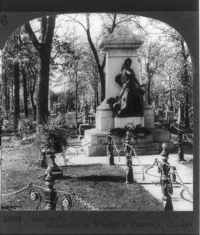
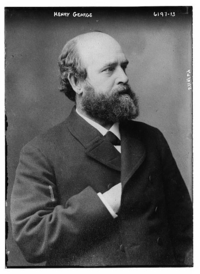
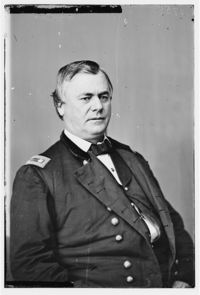
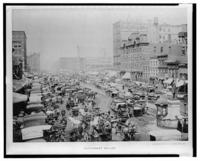



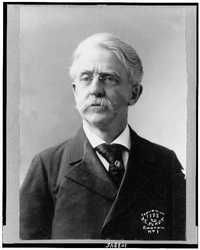
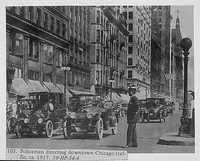

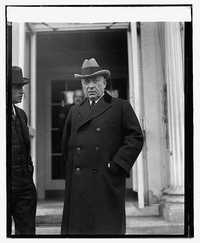



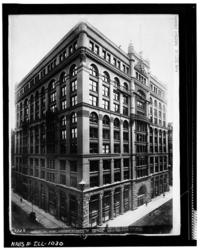
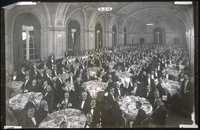
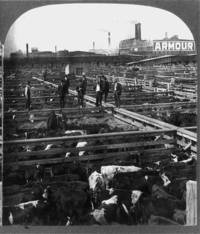
![Alfred M. Craig, Illinois Supreme Court Judge [between 1870 and 1880]](/riesenfeld_images/darrow/thumbs/Alfred_M_Craig_Illinois_Supreme_Court_judge.jpg)


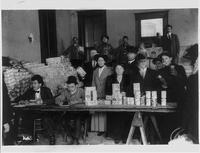
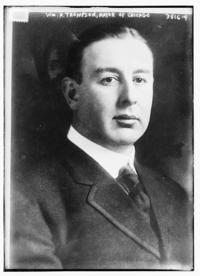
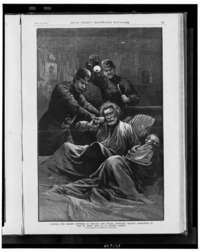

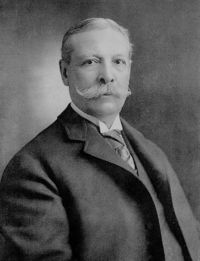
/wiki/File:Yerkes002.jpg
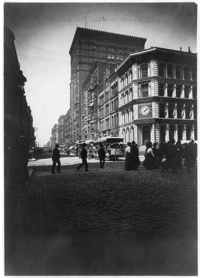
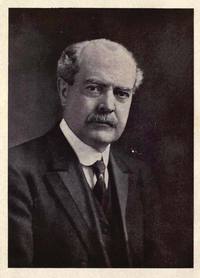


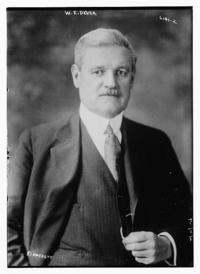
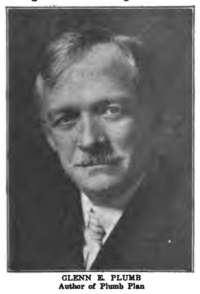
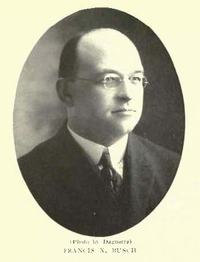

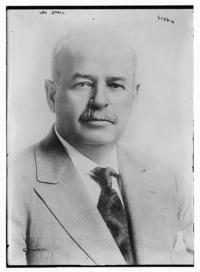

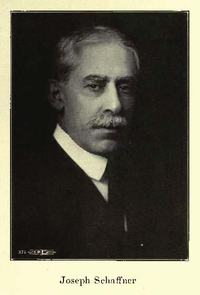
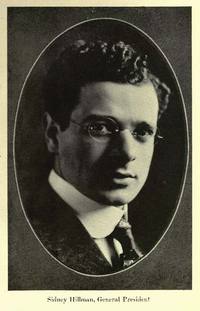

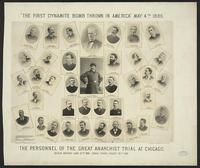

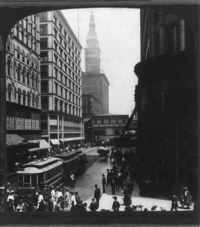

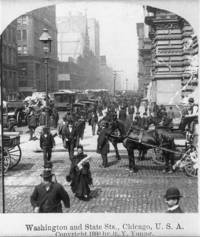
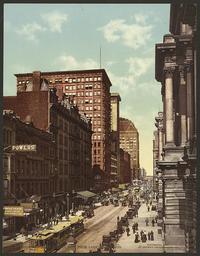


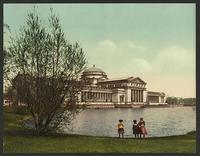


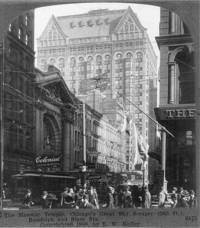

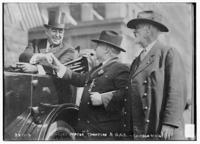
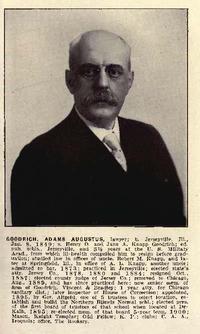

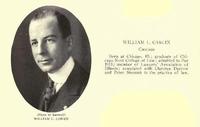



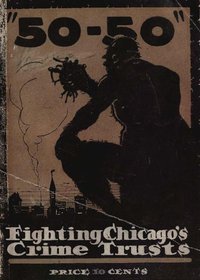
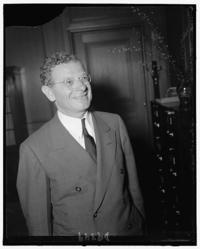
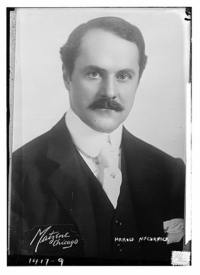
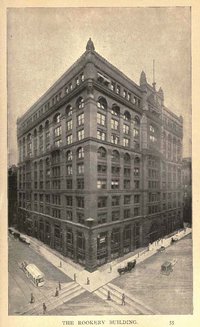



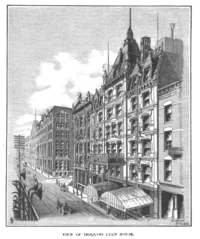
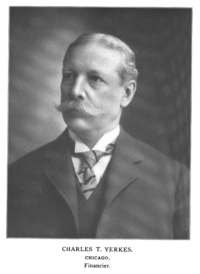
Yerkes Observatory at the University of Chicago is named after Charles Yerkes because he funded the building of a 40 inch refracting telescope that was completed in 1895.
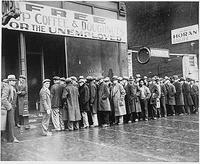
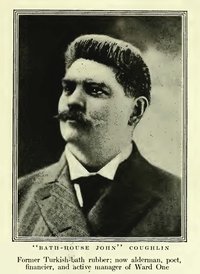
In 1894 an underling named Billy "The Clock" Skakel was dissatisfied with his take from Coughlin so he decided to run against Coughlin in the upcoming election for alderman. Coughlin was the candidate for the Democratic Party so Skakel formed the Independent Democratic Party so he could get on the ballot. Coughlin became worried when it looked like Skakel might win so he went to Mayor Hopkins for help. Hopkins called Skakel in and asked him to withdraw but Skakel refused. Coughlin then had some of his lawyers and Moses Salomon, the state senator for the First District, look for a way to keep Skakel out of the race. A week before the election they found a city law that prohibited anyone convicted of a crime from holding a municipal office. Skakel had been arrested and fined some years previously for gambling so they took this information to the election board. The board was controlled by Mayor Hopkins' people and they removed Skakel's name from the ballot without granting him a hearing. The next day Skakel, with several attorneys including Clarence Darrow, went before a judge to argue that removing Skakel from the ballot was illegal. The judge agreed and Skakel was put back on the ballot. The election was held on April 3, 1894. Because of the contest between Skakel and Coughlin there was a great deal of violence with three people being shot but none died. Coughlin ended up winning the election. Skakel was the paternal great-uncle of Ethel Kennedy.
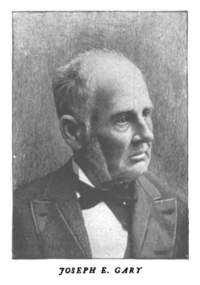
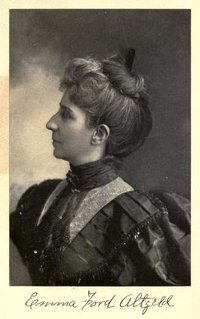
"No man ever lived whom I respected and loved outside my blood relations as I did John P. Altgeld. There is no woman more worthy of respect than the woman who is to be relieved in this bill. I know, and we all know, what John P. Altgeld sacrificed for the State of Illinois and for his devotion to duty as he saw it and as he believed it to be; and no man ever followed his duty more devotedly than did John P. Altgeld. A few weeks ago I voted against a bill to erect a monument to the memory of a good and great woman who lived and died in Illinois (Frances E. Willard). I voted against the appropriation to give $5,000 to the Swedes and Finns who doubtless were in need. I do not intend to vote against all appropriations ... But I do not see how we have the right to vote the money that must be paid by the property holders of this State, great and small, to any private individual, no matter how much I respect them, no matter how high they stand in the common esteem. Much as I regret it, I believe that this sort of legislation is not proper legislation and that there is nothing for me, at least, to do but to vote no on this bill."

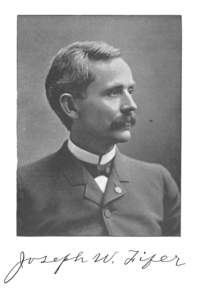
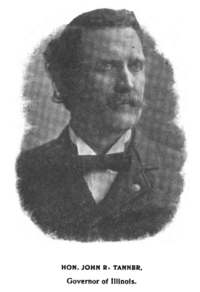
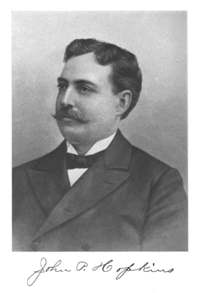
In March 1894 Clarence Darrow became involved in political battle in Chicago. Darrow and other lawyers represented Billy "The Clock" Skakel who was trying to defeat his boss "Bathhouse" John Coughlin in an election for alderman in Chicago's First Ward. The First Ward was notorious for corruption. When Skakel looked like he had a chance to win, Coughlin got the election board, controlled Mayor Hopkins' people, to remove Skakel's name from the ballot without granting him a hearing. The board removed Skakel because he had been arrested and fined some years previously for gambling. Darrow and the other lawyers went before a judge to argue that removing Skakel from the ballot was illegal. The judge agreed and Skakel was put back on the ballot. Coughlin ended up winning the election that was held on April 3, 1894.

